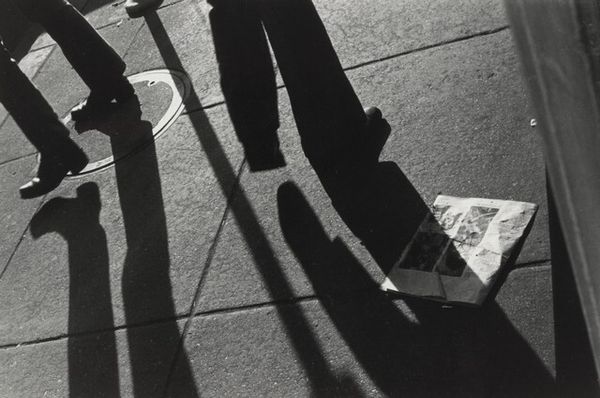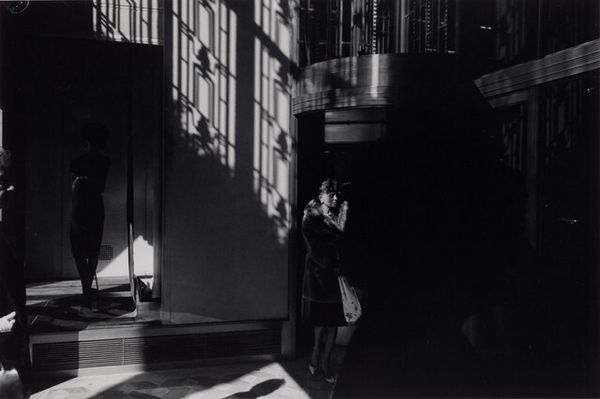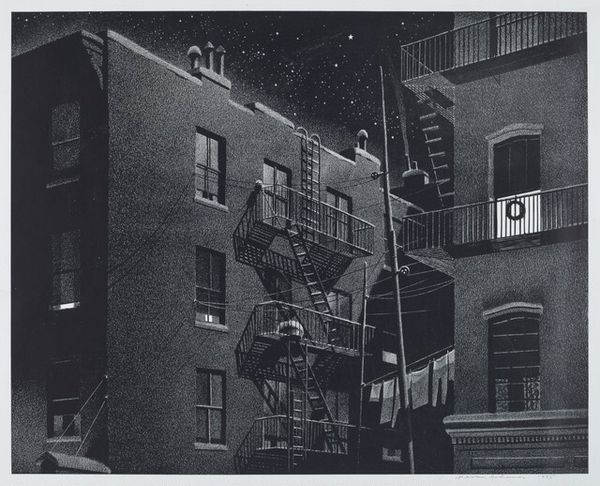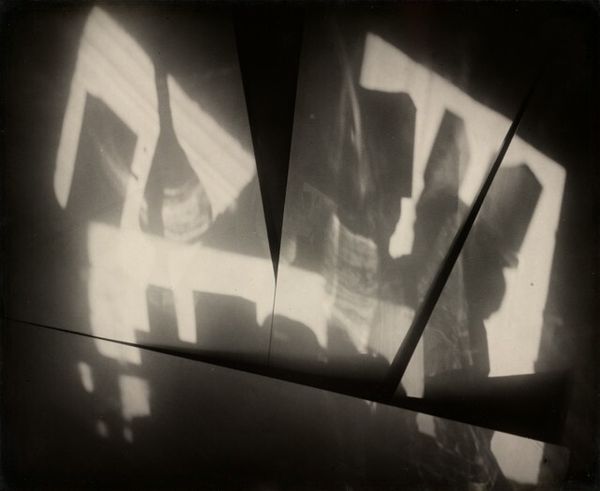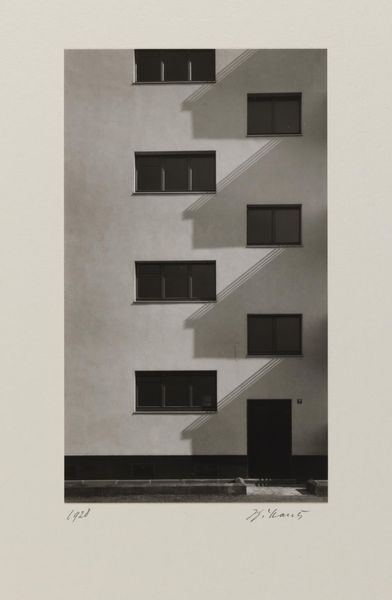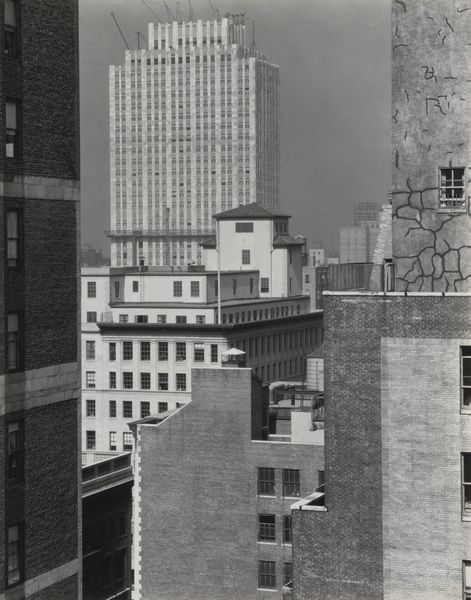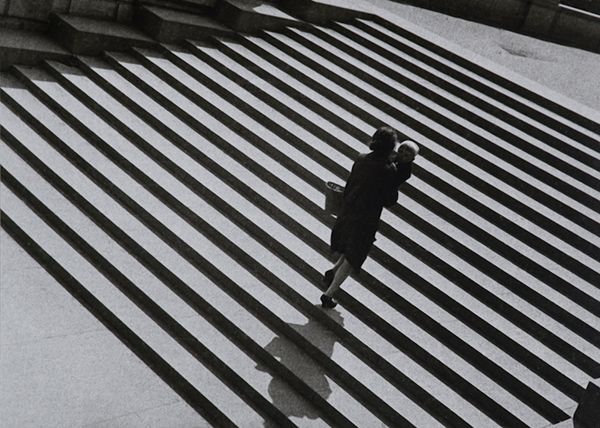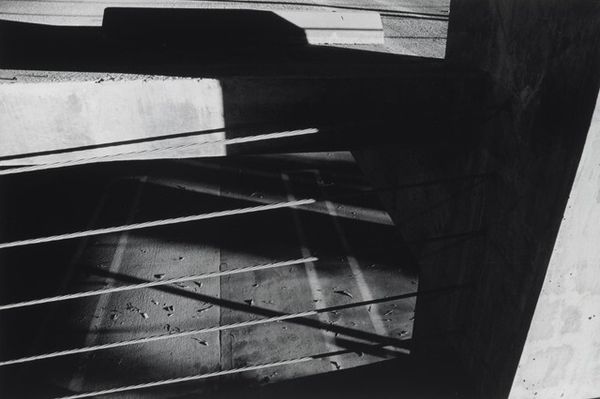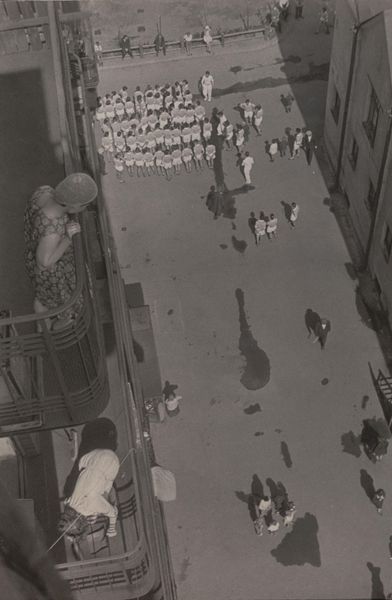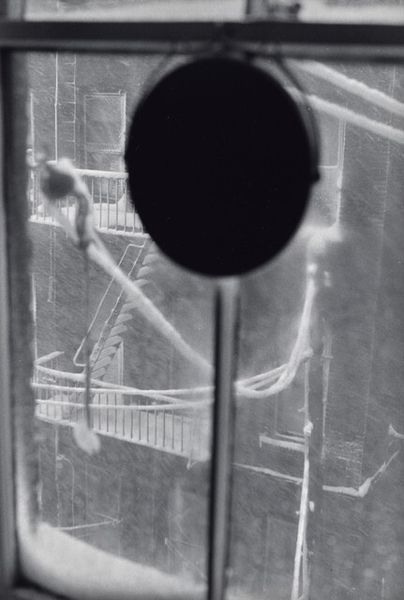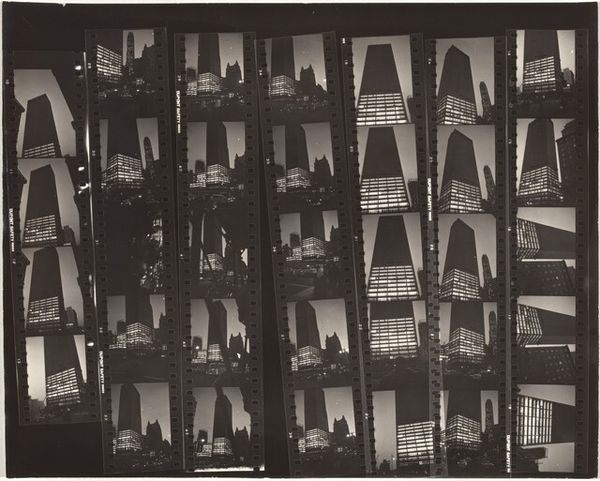
Hellerhof-Siedlung, Frankfurt--My Shadow and the Shadow of the Architect Mart Stam on the Roof Possibly 1930 - 1988
0:00
0:00
photography, architecture
#
photography
#
geometric
#
cityscape
#
bauhaus
#
modernism
#
architecture
Dimensions: image: 22.6 x 34.1 cm (8 7/8 x 13 7/16 in.) sheet: 27.7 x 35.5 cm (10 7/8 x 14 in.)
Copyright: National Gallery of Art: CC0 1.0
Curator: This is Ilse Bing's photograph, "Hellerhof-Siedlung, Frankfurt--My Shadow and the Shadow of the Architect Mart Stam on the Roof," likely taken between 1930 and 1988. The title alone hints at its layers. Editor: My first impression is the dramatic light and shadow play—almost architectural in itself! The severe angles of the building contrast with the soft, elongated silhouettes. What was Bing working with to get such deep blacks and bright whites? Curator: Bing was deeply embedded in the artistic currents of her time; "Hellerhof-Siedlung" absolutely captures the geometric fascination, starkness, and optimism characteristic of Bauhaus photography and cityscapes. The frame itself seems skewed to introduce tension. Editor: The tilted view adds dynamism and an awareness of the urban fabric beyond. But it is the shadows, the ephemeral nature of the figures contrasting with the rigidity of the building materials which I keep returning to. It makes me consider the photographer's positioning in this work. How they constructed this frame is fascinating from a practical standpoint. Curator: Absolutely. Bing, a Jewish woman documenting Germany during the rise of fascism, highlights the photographer's position, reflecting on authorship and place, doesn't she? There is a lot to be said about the new housing project itself, what it meant to modernize living conditions for working class people... Editor: Those living conditions are important to note. Modern architecture wasn’t simply an aesthetic choice but a direct response to specific needs—a spatial materialization of political intent with glass, steel and concrete to provide better ventilation, light and ease of access. Curator: Indeed. And in Frankfurt, figures like Ernst May and Mart Stam, the subject of that second shadow, spearheaded large scale building programs to answer those needs through architecture like the Hellerhof-Siedlung here. Editor: Reflecting on the materiality then adds an interesting layer to those figures standing on the roof overlooking the landscape below. What resources, human or otherwise were mobilized in making this landscape, or photographing it? What did the image enable then, and what does it tell us now? Curator: Seeing how it captures a specific moment, the promise of a social vision in Frankfurt, but knowing what comes later historically really changes the meaning we can glean today, I think. Editor: Yes. Analyzing Bing's methodology gives the image a powerful voice that encourages close examination, even across different timelines.
Comments
No comments
Be the first to comment and join the conversation on the ultimate creative platform.
